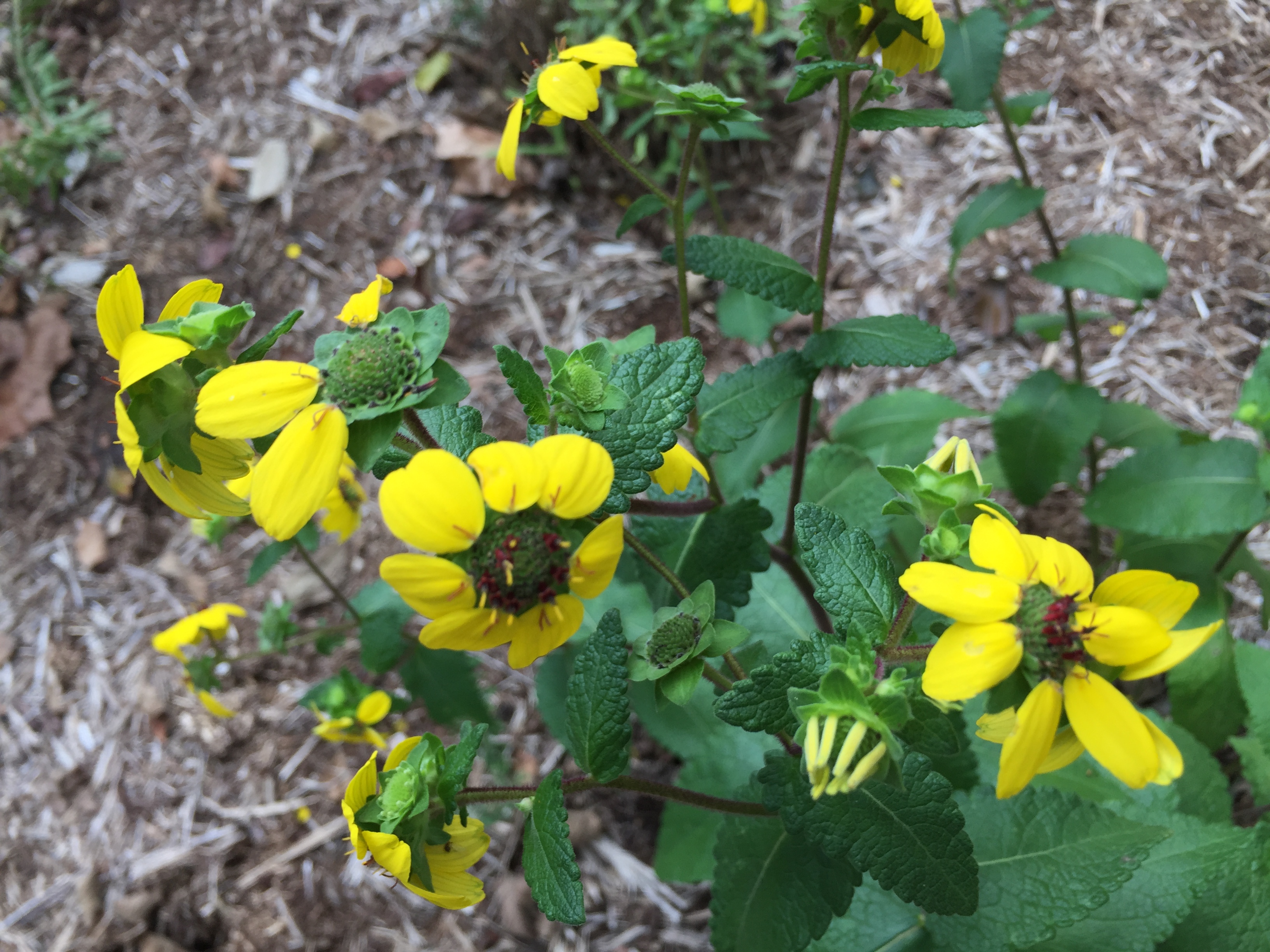Resource Library
Plant of the Week: Berlandiera texana; Texas Green Eyes
I went on a field walk with a mushroom expert once to learn to better identify these interesting fungi. It helped, for on the trip I learned to identify LBM mushrooms. This is not a kind of mushroom, but a catch all name for “little brown mushrooms,” those pesky look-alike species that are all distinct but oh-so-hard to differentiate.
Since then I’ve created a file folder for plant photos I call “yellow sunflowers,” where I stash those pesky look-alike members of the daisy family that bloom in the fall and look oh so much alike, especially when I only photograph the flowers. One of the less common of these is Texas Green Eyes (Berlandiera texana), a plant of alkaline prairies and savannahs in the south-central United States.
Only about 10 species of Berlandiera have been described with B. texqana amongst the most common. It is found in alkaline parts of the Ozark dome, throughout the Flint Hills of central Kansas, on to the high plains of western Oklahoma and the Texas panhandle, the Hill Country of central Texas and over in alkaline sites of central Louisiana. Though primarily a prairie plant, it will move into dry, rocky open woodlands as long as the soil pH requirement is met.
Texas green eyes is a tap-rooted, coarse textured perennial that grows to 3 feet tall with dense pubescence covering the stem and leaves. The 4-plus-inch-long leaves alternate up the stem and are arrowhead shaped with course, rounded teeth and pubescence on both the upper and lower surface. Stem leaves lack a petiole with the leaf base conspicuously clasping the stem.
Flowering begins in early summer and continues until frost but blooms are scattered about the branched inflorescence instead of concentrated in a grand display. The sunflower like heads are to 2 inches across with usually eight, not overlapping yellow ray florets surrounding numerous greenish disc florets. The most distinctive feature of the flower head is the ring of broad, overlapping green sepals that surround the florets and only becomes clearly visible once the yellow ray flowers fall away. These green sepals surround the developing seeds, creating a bowl-like appearance.
This and many other plants were collected by Jean Louis Berlandier (1805 – 1851), a French botanist sent to Mexico in 1826 to join Mexican officials on a boundary line survey between that nation and Texas. Only parts of the expanse were surveyed between 1828 and 1830 with malaria outbreaks and civil unrest hampering the efforts. He claims to have sent back to Switzerland 52,000 dried plant specimens, but his employers were not satisfied with the results so he quit, settled in Matamoros, married a native woman, raised a family and became as a well-regarded physician. In his spare time, he collected plants, studied the Indian tribes of the southern plains — including the Comanche — and served as a Captain in the Mexican army during the Mexican-American war of 1846-1848.
Texas green eyes is in the native plant trade as both live plants and seed. It is best in neutral to alkaline soils in sunny locations. It can be planted as a part of a mixed border or added to sites at a woodland edge. Because it blooms over an extended period it is an important plant for butterflies and bees.
For more information about horticulture or to see other Plant of the Week columns, visit Extension’s Website, www.uaex.uada.edu, or contact your county extension agent. The Cooperative Extension Service is part of the U of A Division of Agriculture.
